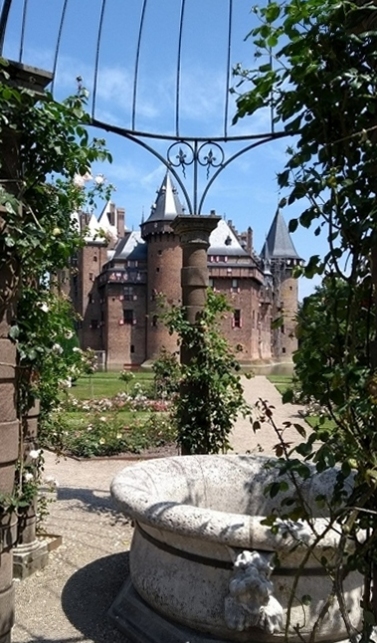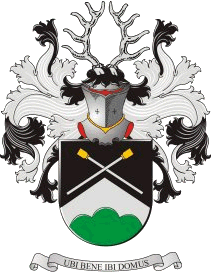Hidden treasure at Castle de Haar
|
The wealthy castle De Haar, the former country house of the barons Van Zuylen van Nijevelt van de Haar is rich in stories, but it also houses many art treasures. Hidden treasureIn the collection of art at Castle de Haar there is a small “hidden treasure”:In the Great Hall, unnoted on a side-table with bottles of liquor, there is a special mahjongchest. 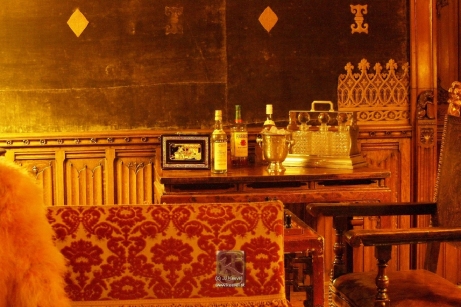 This chest draw my attention immediately. After some urging, I was allowed to do research. This web page contains a summary of the research report. |
In close up the box immediately looks interesting:
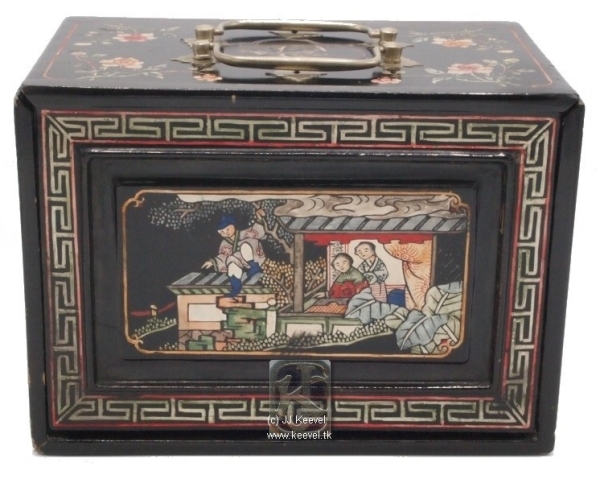
The image on the front most likely comes from "The Story of the Western Wing", one of the most famous Chinese dramas written by playwright Wang Shifu. The story is about the secret love affair between Zhang Sheng, a young student, and Cui Yingying, the daughter of a chief minister of the Tang court. Since the publication of this piece in the thirteenth century, it has been unrivaled in popularity. "China's most popular love comedy" was regarded by moralists as an indecent, immoral and dissolute work, so it was placed high on the list of forbidden books. |
Behind the sliding lid we find five drawers.
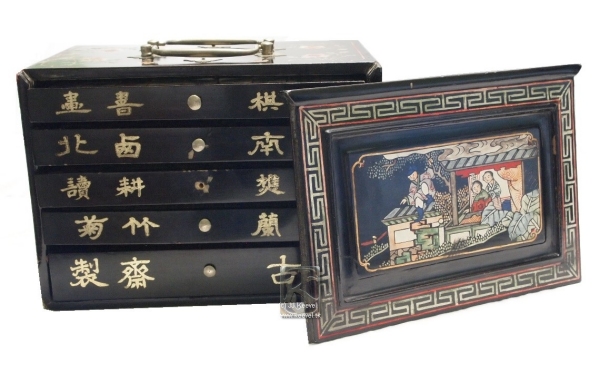
There are four Chinese characters on each of the five drawers. These inscriptions are groups of 4 words, these originate in old writings and traditions. This also applies to the images on the so-called lucky stones. There are several traditional series of word groups, including the series on these drawers and these lucky stones. They are so-called traditional characters (i.e. not "simplified"); these are read from right to left. The text is also written in a very old style. From top to bottom these drawers read:
|
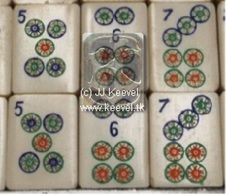
|
The tiles are engraved by hand; the engravings are beautiful and of very good quality. |
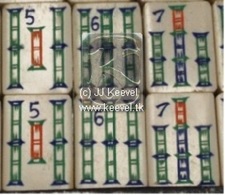
|
Bamboo tile with serif together with perfect circles on the Circle tiles make this seta high quality set. |
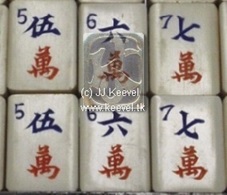
|
 As usual the Bamboo-1 is the Holy Bird Pe-ling. In this case a special and beautiful picture; not everyday, possibly exceptional. |
This particular combination of animals and trees is rare.
Birds in the pictures of the trees is also exceptional.
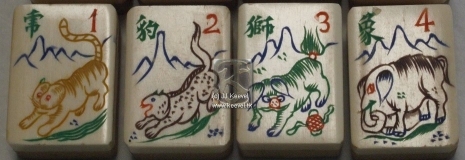
|
||||||||||
This group stand for strength, bravery, protection, astuteness. Images of these animals on chance tiles are very rare. However, these animals are known in the board game Dòushòuqí. There is also a mountain range east of Taipei with the names of these animals |
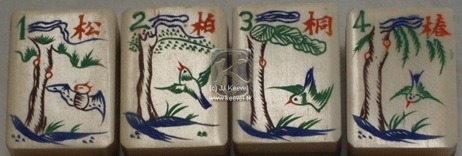
|
||||||||||
Sōng bǎi tóng chūn is a congratulatory wish for a birth or a birthday: “a long life like pine and cypress”. Pine and cypress trees (Sōng, Bǎi) are traditional symbols for "long life" due to their evergreen nature. The names for the last two everlasting trees (Tóng, Chūn) are homonyms of the words for exuberance and power, thus emphasizing the wish. |
|
Research results The experts agree that this mah-jong set dates from the period of the first western mah-jong hype, i.e. the mid-1920s. It is a high-quality set, a showpiece but obviously it has also been played with. The flowers are special; the four animals and the birds in the trees are certainly not everyday. The Bamboo tiles are special, the bird Pe-ling is particularly beautiful. The set was already special when made by the combination of
The whole combination of all these parts makes the set pretty special. In addition, the set has been preserved very well. Conclusion Unfortunately there is no evidence whatsoever, so we have to live with the rough estimate that this outstanding mah-jong set was made in the mid-1920s There are some hypotheses about the origin and the age of this set. Most appealing to the imagination is the hypothesis that the set obtained by barons Marguerite who was a keen Gin Rummy player (almost addicted). Unfortunately there is no evidence for this allegation. It fits the world of mah-jong to have a myth like this. |
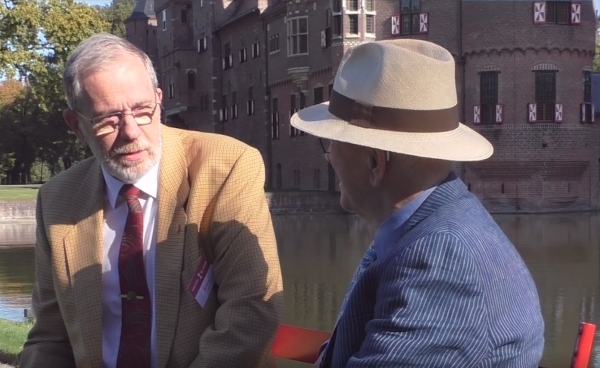
Hidden treasure, the movie ... |
The research has been carried out in july 2018 by:
Video: Jelte Rep |
|
This webpage contains a short version of the research report.
The research is recorded - both in Dutch and English - in the following documents:
Photos: Jan Keevel Video: Jelte Rep |




